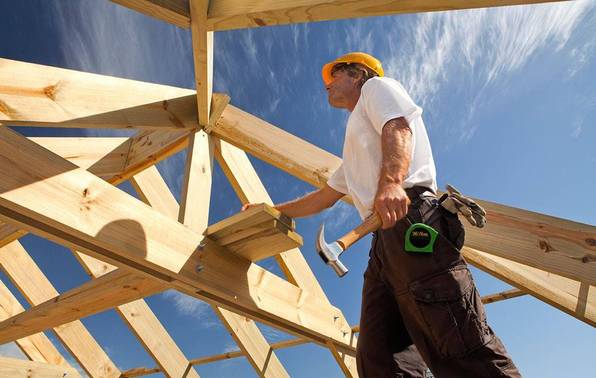Installing fire protection
There are many options for protecting your home and family in the event of a fire.
Smoke alarms and sprinkler systems are two of the options for protecting your home and family in the event of a fire.
The importance of smoke alarms
They save lives - there's no doubt about it. And now, all new houses and consented alterations to houses are required to have an “‘effective means of giving warning of fire”.
Whenever work is carried out on a dwelling that requires a building consent, to meet the requirements of the Building Act the whole dwelling, not just the altered area, must be fitted out with a means of detection and warning of fire.
Smoke alarms are the most common way to achieve this. Other means of warning can be used, and as the design of houses can differ substantially you should consider getting advice from your architect or builder on what means of warning would be best for your home.
Smoke alarm checklist
Check the smoke alarm has a “hush” feature (usually a button or switch). This allows the alarm to be temporarily silenced upon false activation without the need to remove the battery. The alarm should also be easy to test. Also, check that the smoke alarm complies with at least one of the following standards:
- AS 3786
- ISO 12239
- BS EN 14604
Where should I install smoke alarms?
Install smoke alarms on the escape routes on all levels within the house, and in areas where people sleep, either:
- in every sleeping area; or
- within three metres of every bedroom door. The alarms must be audible to sleeping occupants on the other side of the closed door.
Smoke alarms are installed on or near the ceiling, in accordance with the manufacturer's instructions.
Installing a smoke alarm in a kitchen or bathroom should be avoided because of the increased likelihood of unwanted alarms caused by cooking, or steam from baths and showers.
Types of smoke alarm
There are two sources of power for smoke alarms:
- Battery operated stand-alone smoke alarms. Some can be linked, but the majority are not connected to each other. The batteries need to be checked monthly and replaced when needed.
- Smoke alarms connected to the home’s power supply. These alarms often have a battery back-up and can also be inter-connected so that when one operates, they all sound. This is considered by experts to be the ideal system.
Consumer NZ recommends installing long-life photoelectric type smoke alarms in your home.
The New Zealand Standard NZS 4514:2002 ‘Interconnected smoke alarms for single household units’ sets out requirements for the installation and commissioning of externally powered interconnected smoke alarms.
How do I ensure smoke alarms are kept in good working order?
Follow the manufacturer's maintenance advice. Also, on a monthly basis you should:
- check the alarm still works by pressing the test facility located on the outside of the device. Replace dead batteries immediately.
- gently vacuum the dust that gathers on the device. Don’t take the alarm apart or off its mount to do this.
Battery mounts
Some models can be installed with the battery the wrong way round, or without a battery in place at all! However, these problems will surely be discovered once you use the test button to check they are working properly.
There have also been reports of batteries slowly slipping out of the battery mount. Look for models with push-on connectors or firm battery mounts.
Hard of hearing?
If you have a hearing impairment, an ultra-loud alarm and/or one with a flashing light may help. Contact the Deaf Aotearoa or the Hearing Association for more information.
Sprinkler systems
Domestic sprinkler systems are available which will activate automatically and spray water on a fire. They are installed by plumbers and connect to your ordinary domestic water supply.
If installed when you’re building a home, a system is inexpensive. In existing houses, it’s relatively easy to install the pipe-work in the void above the living areas and connect it to the existing water system.
They are heat activated so only the sprinkler head affected by the fire activates. They won’t flood the whole house and won’t be activated by smoke (for example, from the toaster). Ninety percent of fires are controlled by just one sprinkler.
The advantage of sprinklers is that they contain and control a fire in its early stages, which means less fire and water damage to your home. They will not provide early warning so you still need smoke alarms.
The New Zealand Standard NZS 4517:2002 specifies minimum requirements for the design, material and installation of fire sprinkler systems for households.
This page was put together with the help of BRANZ.

Building articles
Whether you're planning to build your own home or renovate an existing one, we've got you covered with a wide range of articles covering the whole process.

Renovating articles
Renovating and altering houses is a favourite pastime for many New Zealanders. Our articles take a look at what's involved when you undertake a renovation project.

Home maintenance
Regular maintenance is needed to ensure your house holds its value and remains safe and comfortable to live in.
Member comments
Get access to comment